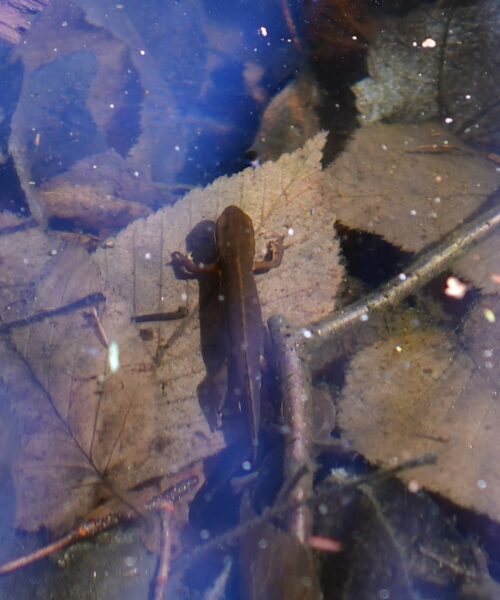February 21, 2023
By Brandee Coleman Gilmore
It’s easy to let the beauty of the Litchfield hills solely provide the backdrop for our lives. But do you ever wander in, and wonder what you’re looking at? If your timing is right, one natural treasure is an aquatic formation called a vernal pool. Vernal, from Latin ver for ‘spring,’ implies precisely when they crop up. Fed by snowmelt, rain, and groundwater, they’re typically smaller and shallower than ponds, according to Cynthia Rabinowitz, Executive Director of CT’s Northwest Conservation District. Just a few feet deep at most, she says these special pools have one other defining characteristic—they’re teeming with the budding lives of certain amphibians. These ‘obligate species’ include wood frogs, spotted salamanders, and the elusive fairy shrimp, according to local soil and wetlands scientist Edward Pawlak. By April, vernal pools support glob-like rafts of their eggs, nestled together resembling submerged bubble wrap. Vernal pools don’t support predator species, so once hatched, the tadpoles and newts can mostly metamorph without threat. However, they do race against time reaching adulthood before the pond dries up in midsummer. They then fan out to seek habitat in the upland woods, typically returning to the same vernal pool to reproduce the following spring. If you come across one of these delicate gems, the experts urge looking, but not touching vernal pools to prevent wildlife injury and contamination.






















